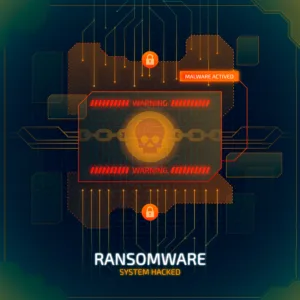
Table of Contents
Introduction – Operational Technology Security
In the digital age, operational technology (OT) plays a critical role in managing and controlling industrial processes, infrastructure, and essential services. OT encompasses hardware and software that monitors and manages physical devices and processes, making it vital for sectors such as manufacturing, energy, transportation, and healthcare.
However, as OT systems become more interconnected and digitized, they also become susceptible to cyber threats. To mitigate these risks effectively, organizations must implement robust cybersecurity measures tailored specifically for their OT environments.
The Growing Importance of Operational Technology Security
Operational technology cybersecurity involves protecting industrial control systems (ICS), supervisory control and data acquisition (SCADA) systems, and other OT assets from cyber threats. Unlike traditional IT systems, OT systems often control physical processes and equipment, making the consequences of a cyberattack potentially severe—ranging from production disruptions to equipment damage or safety hazards.
Top Security Measures for Operational Technology Security
Implementing effective cybersecurity measures for operational technology requires a holistic approach that addresses the unique characteristics and challenges of OT systems.
Here are key security measures organizations should consider:
1. Conduct Risk Assessments:
– Begin with comprehensive risk assessments to identify and prioritize potential threats and vulnerabilities specific to OT environments.
– Understand the impact of cyber threats on operational processes and critical infrastructure.
2. Establish Asset Inventory:
– Maintain an up-to-date inventory of all OT assets, including controllers, sensors, actuators, and network devices.
– Regularly assess and manage the security posture of these assets throughout their lifecycle.
3. Implement Network Segmentation:
– Segment OT networks from IT networks to minimize the impact of a cyber incident and prevent lateral movement by attackers.
– Use firewalls and intrusion detection/prevention systems to enforce segmentation and monitor network traffic.
4. Strengthen Access Controls:
– Enforce strict access controls based on the principle of least privilege (PoLP) to limit user and application access to critical OT systems.
– Implement multi-factor authentication (MFA).
5. Regular Patching and Updates:
– Apply timely patches and updates to OT devices and software to mitigate known vulnerabilities.
– Establish a robust change management process to ensure updates are tested and deployed without disrupting critical operations.
6. Deploy Intrusion Detection Systems (IDS) and Anomaly Detection:
– Deploy specialized IDS and anomaly detection tools that can monitor OT network traffic and identify suspicious behavior indicative of a cyberattack.
– Implement real-time alerting mechanisms to enable swift incident response.
7. Enable Endpoint Protection:
– Install endpoint protection solutions (e.g., antivirus software) on OT devices to detect and prevent malware infections.
– Consider using application whitelisting to control which programs can run on OT systems.
8. Enhance Employee Training and Awareness:
– Provide regular cybersecurity training to OT personnel to educate them about potential threats and best practices.
– Foster a culture of cybersecurity awareness and accountability across the organization.
9. Develop an Incident Response Plan:
– Create and regularly update an incident response plan specific to OT environments.
– Conduct tabletop exercises and drills to test the effectiveness of the plan and ensure readiness for cyber incidents.
10. Embrace Security by Design Principles:
– Implement security by design principles during the development and deployment of OT systems and components. – Consider cybersecurity at every stage of the product lifecycle to build resilience against emerging threats.
Addressing Unique Challenges in OT Security
Securing operational technology presents several challenges that require tailored solutions:
– Legacy Systems:
Many OT systems operate on legacy infrastructure that lacks built-in security features or is incompatible with modern security solutions. Organizations should prioritize upgrading or replacing these systems where possible.
– High Availability Requirements:
OT environments often require continuous operation, making it challenging to implement security updates without disrupting critical processes. Organizations should implement strategies to minimize downtime during security maintenance.
– Complex Supply Chains:
OT systems rely on third-party vendors and suppliers, increasing the attack surface and introducing supply chain risks. Implementing vendor risk management practices is essential to mitigate these risks.
– Regulatory Compliance:
OT environments are subject to industry-specific regulations and standards (e.g., NIST SP 800-82, IEC 62443) that mandate cybersecurity controls. Organizations must ensure compliance with these regulations while adapting to evolving threats.
The Future of Operational Technology Security
Looking ahead, the field of operational technology cybersecurity will continue to evolve.
Organizations should consider the following trends and developments:
– Integration with IT Security Operations: Foster collaboration between IT and OT security teams to enable centralized threat intelligence sharing and incident response coordination.
– Adoption of AI and Machine Learning: Leverage AI-driven technologies to enhance anomaly detection and automate incident response in OT environments.
– Cybersecurity Awareness and Education: Invest in continuous training and awareness programs to empower OT personnel with the knowledge and skills needed to address cybersecurity risks effectively.
In conclusion, securing operational technology is crucial for maintaining the reliability, safety, and resilience of critical infrastructure. By implementing a combination of proactive security measures, organizations can effectively mitigate cyber risks and safeguard their OT environments against evolving threats.
As technology continues to advance, staying vigilant and adaptable will be essential in maintaining a strong cybersecurity posture for operational technology.
Frequently Asked Questions (FAQ) on OT Security
1. What is operational technology (OT) security?
Operational technology (OT) security involves protecting industrial control systems (ICS), supervisory control and data acquisition (SCADA) systems, and other hardware and software used to manage and monitor physical processes and equipment. It focuses on securing critical infrastructure and industrial environments from cyber threats.
2. How is OT security different from IT security?
OT security is distinct from information technology (IT) security because it deals with managing and securing systems that control physical processes, such as manufacturing equipment, power grids, and transportation systems. Unlike IT systems that primarily handle data, OT systems directly control machinery and processes, making them more susceptible to operational disruptions from cyberattacks.
3. What are the main challenges in securing operational technology?
Some key challenges in OT security include:
– Legacy Systems: Many OT environments use legacy systems that lack built-in security features and are difficult to update.
– High Availability Requirements: OT systems often require continuous uptime, making it challenging to apply security patches without disrupting operations.
– Complexity: OT environments are complex and interconnected, with dependencies on third-party suppliers and contractors, increasing the attack surface.
– Regulatory Compliance: OT systems must comply with industry-specific regulations and standards, adding complexity to cybersecurity efforts.
4. What are common cybersecurity threats to operational technology?
Common threats to OT environments include:
– Malware and Ransomware: Attacks designed to disrupt operations or extort money by encrypting critical data.
– Denial of Service (DoS) Attacks: Attempts to overwhelm OT systems with excessive traffic, causing operational disruptions.
– Insider Threats: Unauthorized access or malicious actions by employees, contractors, or third-party vendors.
– Supply Chain Attacks: Compromising OT systems through vulnerabilities in third-party components or software.
5. How can I improve OT security in my organization?
To enhance OT security, consider implementing the following measures:
– Conduct regular risk assessments and asset inventories to identify vulnerabilities.
– Implement network segmentation to isolate OT systems from IT networks.
– Enforce strong access controls and multi-factor authentication (MFA) for system access.
– Keep OT systems up to date with security patches and updates.
– Deploy intrusion detection systems (IDS) and anomaly detection to monitor for suspicious activities.
– Educate employees about cybersecurity best practices and establish incident response plans.
6. What are best practices for securing legacy OT systems?
Securing legacy OT systems requires a combination of strategies, including:
– Implementing compensating controls such as firewalls and network segmentation.
– Using virtual patching and intrusion prevention systems (IPS) to mitigate vulnerabilities.
– Isolating critical systems and limiting external connectivity where possible.
– Collaborating with vendors to identify and address security gaps in legacy systems.
7. How does compliance with standards like NIST SP 800-82 and IEC 62443 impact OT security?
Compliance with standards such as NIST SP 800-82 and IEC 62443 provides a framework for implementing effective OT security controls. These standards outline best practices for securing industrial control systems and help organizations mitigate cybersecurity risks by providing guidelines for risk management, network segmentation, access controls, and incident response.
8. What role does employee training play in OT security?
Employee training is crucial for enhancing OT security awareness and reducing human-related risks. Training programs should educate employees about cybersecurity threats specific to OT environments, such as social engineering attacks and proper handling of credentials. Regular training sessions empower employees to recognize and report potential security incidents promptly.
9. How can organizations prepare for OT security incidents?
Organizations should develop and regularly test incident response plans tailored for OT environments. These plans should include procedures for detecting, containing, and mitigating cybersecurity incidents, as well as communication protocols for notifying stakeholders and regulatory authorities. Conducting tabletop exercises and simulations helps validate incident response capabilities.
10. What are emerging trends in OT security?
Emerging trends in OT security include:
– Adoption of artificial intelligence (AI) and machine learning (ML) for anomaly detection and predictive maintenance.
– Increased focus on supply chain security and vendor risk management.
– Integration of IT and OT security operations to enhance threat intelligence sharing and incident response coordination.
– Implementation of zero-trust architecture principles to reduce attack surfaces and improve access controls.
Read more on https://cybertechworld.co.in for insightful cybersecurity related content.



















